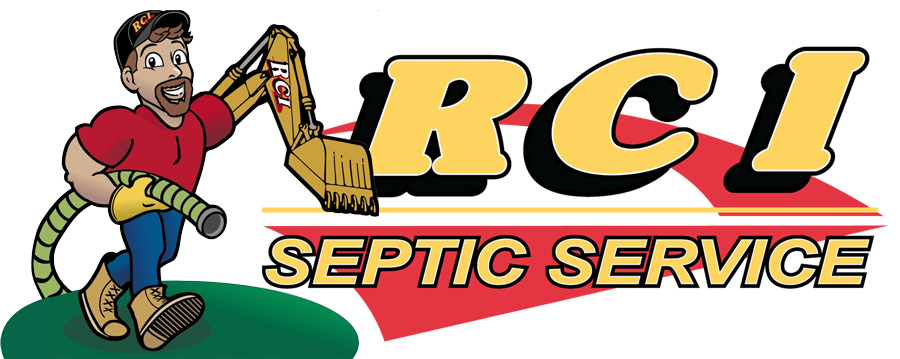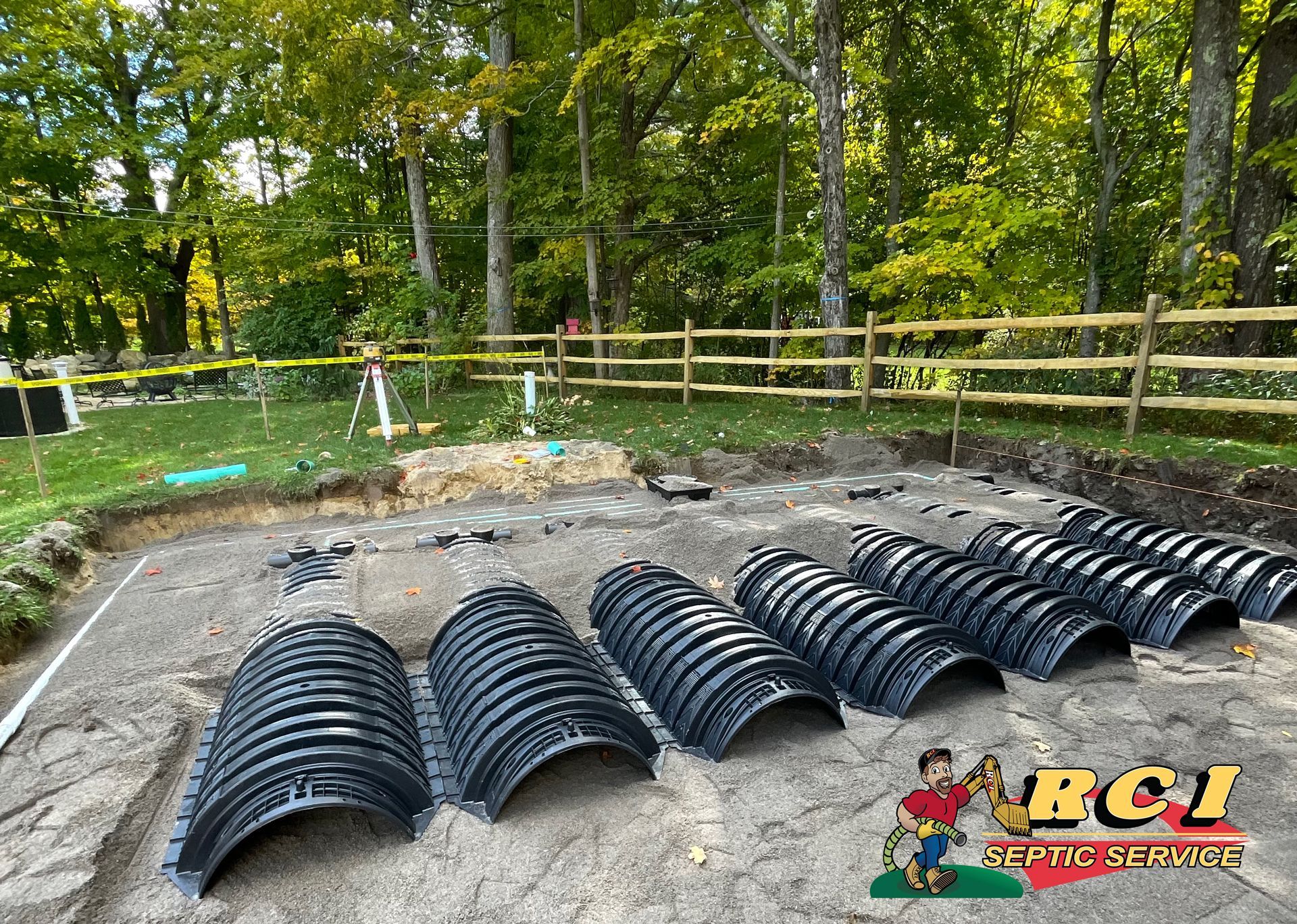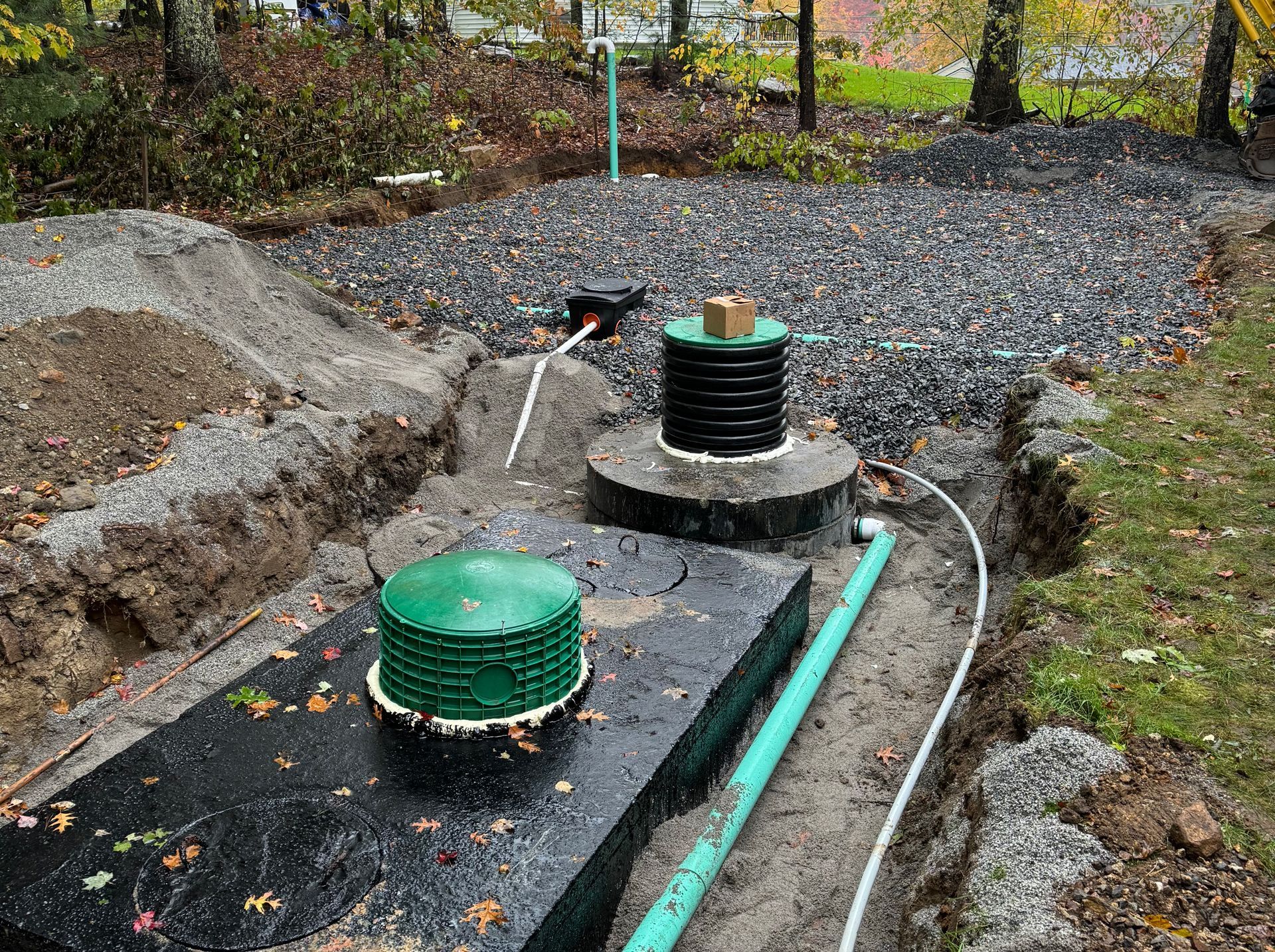Efficient Techniques for Cleaning Septic Leach Lines
If you suspect your septic leach lines are clogged, quick action is essential. Clogged leach lines can cause slow drains, sewage backups, and yard flooding. In this article, we’ll cover signs that indicate cleaning is needed, effective methods for cleaning septic leach lines, and tips for preventing future issues.
Key Takeaways
- Septic leach lines are crucial for wastewater treatment, relying on soil and aerobic bacteria for effective purification.
- Signs of issues with septic leach lines include slow drains, sewage backups, unpleasant odors, and standing water, indicating that cleaning may be necessary.
- Regular maintenance, including inspections and avoiding harsh chemicals, is essential to prolong the lifespan of septic systems and prevent costly repairs.
Understanding Septic Leach Lines
Septic leach lines are essential for effective wastewater treatment in septic systems. They facilitate the natural filtering of septic effluent into the soil, a process crucial for the entire septic system’s operation. These lines, often referred to as septic leach field, septic field lines, drain fields, or leach fields, are designed to disperse the treated wastewater, allowing it to percolate through the soil where it’s further purified. Additionally, the septic line plays a vital role in this process.
Comprehending the function of septic leach lines highlights their significance and aids in identifying when they require maintenance. Next, we explore their operation and common performance issues.
How do septic leach lines work?
Septic leach lines consist of perforated PVC drain pipes, crushed stone, leach pipe, and unsaturated soil, which work together to facilitate wastewater dispersal. When wastewater exits the septic tank, it flows through these perforated pipes and into the surrounding soil. The soil acts as a natural filter, removing contaminants as the water percolates down to recharge the groundwater.
The efficiency of this process relies heavily on aerobic bacteria present in the leaching field. These bacteria break down organic matter and eliminate viruses in the wastewater. They also reduce nutrients, enhancing its purification before it re-enters the environment. Gravity aids in moving the wastewater, but the formation of a biomat can sometimes slow down this process by reducing the infiltration rate.
Common issues with septic leach lines
Despite their critical role, septic leach lines can encounter several issues. Common causes of leach line failure include biological overload, hydraulic overload, and chemical interference.
Hydraulic overload occurs when too much water is sent to the septic tank, overwhelming the leach field’s capacity to process it. It can result from excessive use of water fixtures or improper flushing of items.
Biological overload occurs when high amounts of non-degraded organic material like grease and oil reach the leach field, leading to clogs and reduced efficiency. Additionally, clogging in leach lines can interfere with wastewater treatment, potentially causing environmental pollution and necessitating a complete system replacement if the issues are severe.
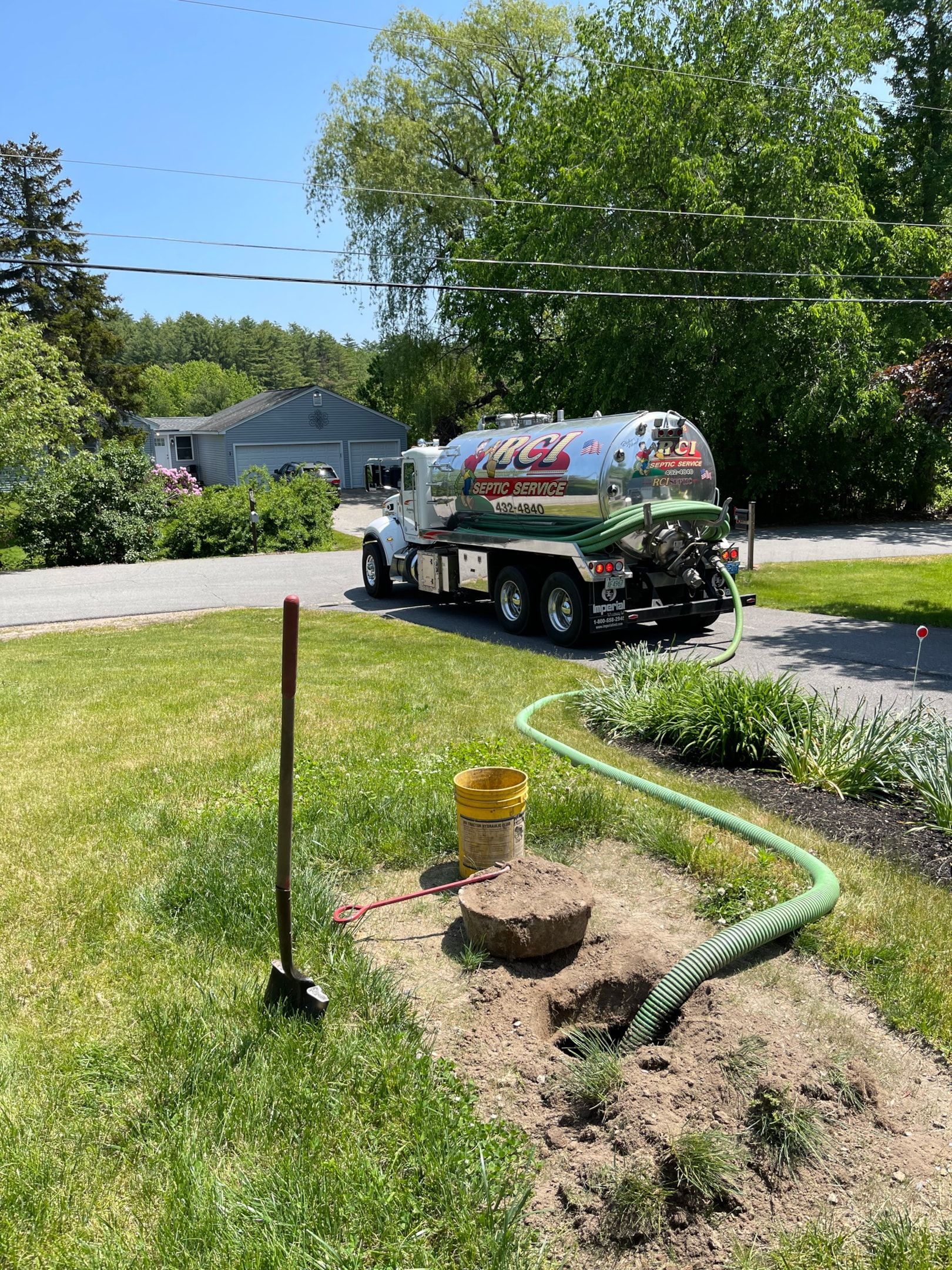
Signs Your Septic Leach Lines Need Cleaning
Recognizing the signs that your septic leach lines need cleaning is crucial for preventing system failures and costly repairs. A high
water level in the septic tank often indicates that the leaching bed is likely clogged. Wet areas above the field, standing water, and strong sewage odors are common signs of
leach field issues. Ignoring these symptoms can lead to groundwater contamination and compromise the entire septic system.
Upcoming sections will cover specific indicators, such as slow drains, sewage backups, unpleasant odors, standing water, or lush vegetation, that suggest that your septic leach lines might need cleaning.
Slow drains and sewage backups
Slow drains can signal an impending sewage backup due to clogs in the septic system that hinder wastewater flow. Septic systems may fail when overloaded with wastewater, often caused by excessive use of water fixtures or improper flushing of items. A full septic tank can lead to sewage backing up into the home or pooling above the drain field, indicating a malfunctioning system.
Gurgling sounds from the plumbing are another red flag, suggesting blockages within the septic system that require immediate attention. Bright patches of grass near the septic system may also suggest the presence of wastewater, indicating a leak or backup situation.
Unpleasant odors
Foul smells like rotten eggs around the leach field can signify sewage issues. Unpleasant odors around your yard or drain field serve as important warning signs of potential problems with septic leach lines. These smells often indicate that the system is not functioning correctly and requires immediate attention.
Standing water and lush vegetation
Standing water and unusually lush vegetation are strong signs of drainage issues in septic leach fields. Excessively green grass above the leach field can indicate system dysfunction. These signs suggest that the leach lines are not effectively dispersing wastewater, leading to surface pooling and potentially more serious problems.
Methods for Cleaning Septic Leach Lines
Several methods can be employed to clean septic leach lines and restore their functionality. Bio-Sol offers a fast, simple, safe, and economical solution for septic system problems. During cleaning, professionals may use specialized equipment, such as high-pressure water jets, to clear blockages and restore proper flow in leach lines.
We will now detail specific cleaning methods, such as using a sewer jetter, biological treatments, and manual techniques.
Using a sewer jetter
Pressurized sewer jetters are recommended for cleaning clogged leach lines, and gas pressure washers are more effective than electric ones for removing sludge. Often, digging to expose the ends of septic lines allows for better access during cleaning.
If a jetter does not clear the clog, it may indicate the presence of tree roots. These roots can be cut using a mechanical auger. This method is highly effective in removing stubborn blockages and ensuring the septic system operates smoothly.
Biological treatments
Shock treatments introduce billions of bacteria and enzymes into the septic system, allowing bacteria to digest organic waste faster and unclogging the system. Products like BioOne are designed to degrade fats, oils, and greases, helping maintain the functionality and health of leach fields.
Adding high concentrations of bacteria can help decompose organic matter in leach fields, reducing sludge and minimizing backups.
Manual methods
Manual techniques include using a pumper truck to extract sludge and debris from the system. This method is often employed when other methods are ineffective or when immediate intervention is required to prevent system failure.
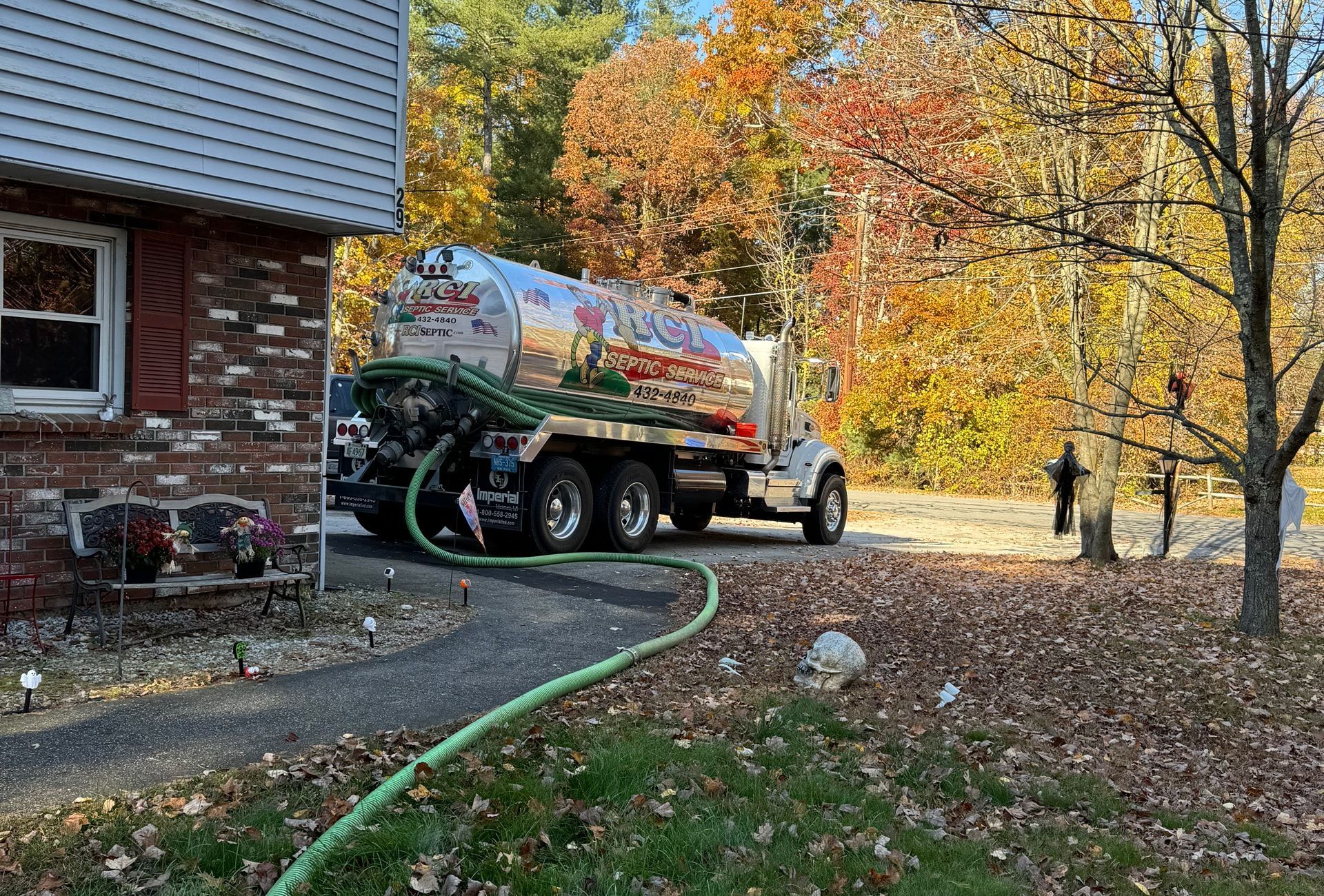
Preventative Maintenance for Septic Systems
Regular maintenance of septic systems helps extend their operational life and prevent costly repairs. Engaging professional septic cleaning services ensures that the job is done safely and thoroughly, prolonging the system's lifespan. Regular upkeep can also significantly reduce the likelihood of leach line clogs, thereby enhancing their longevity.
Next, we will discuss specific maintenance practices, such as regular inspections, avoiding chemical cleaners, and proper waste disposal.
Regular inspections
Routine inspections are crucial for identifying and addressing potential issues in septic systems early. Conducting inspections every three to five years helps identify issues like leaks and blockages before they escalate. Neglecting regular inspections can lead to costly repairs and system failures.
Avoiding chemical cleaners
Harsh chemical cleaners can disrupt the balance of beneficial bacteria in septic systems, leading to potential failures. Using harsh chemicals can destroy the beneficial bacteria in septic systems that are vital for waste breakdown.
Consider using biodegradable and eco-friendly cleaning products as alternatives to harmful chemical cleaners.
Proper waste disposal
Proper waste disposal is crucial for maintaining the functionality and longevity of septic systems. Following best practices for solid waste disposal will help prevent clogs and maintain the efficiency of septic leach lines.
Avoiding chemical cleaners and using biodegradable and eco-friendly products are highly recommended.
Summary
In summary, maintaining your septic leach lines is crucial for the health of your entire septic system. Recognizing the signs that indicate cleaning is needed, understanding various cleaning methods, and engaging in preventative maintenance can save you from costly repairs and environmental hazards. By investing in regular inspections, avoiding harsh chemical cleaners, and disposing of waste properly, you can extend the life of your septic system and keep it functioning efficiently.
Frequently Asked Questions
Does shocking a leach field work?
Yes, shocking a leach field can be effective, as introducing a high concentration of bacteria and enzymes can help break down accumulated organic matter and unclog the system.
How to clean out septic lateral lines?
To clean out septic lateral lines, remove the small green cap at the end of each line, unscrew the PVC cap, and then activate the pump until the water runs clear, which should take approximately 10-20 seconds. Ensure to return the pump to its automatic setting afterward.
Can leach field lines be cleaned?
Yes, leach field lines can be cleaned using a high-pressure water process that effectively removes clogs and debris. This method utilizes a specialized nozzle to apply powerful water jets that clear any blockages.
What are the signs that my septic leach lines need cleaning?
If your septic leach lines need cleaning, watch for slow drains, sewage backups, unpleasant odors, standing water, or unusually lush vegetation over the leach field. Addressing these signs promptly can prevent more serious issues.
How often should I have my septic system inspected?
It is advisable to have your septic system inspected at least every three years to ensure it operates effectively. Regular inspections help prevent potential issues and maintain system health.
